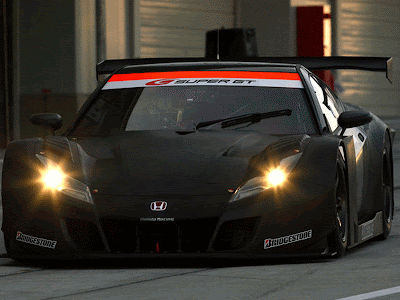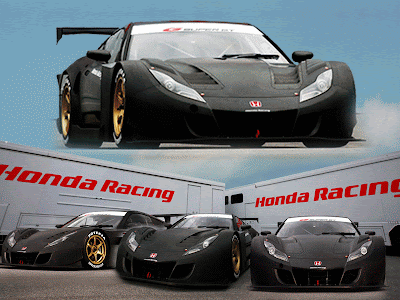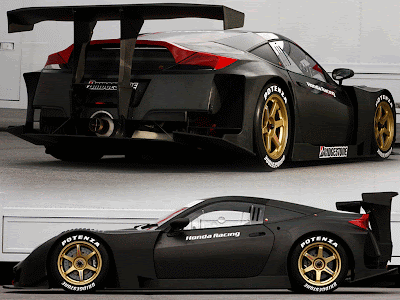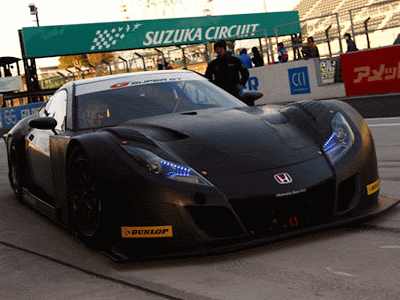
In the superluxe world, we're used to this maneuver: add a few horsepower, shave a tenth or two, sew in a few extra threads, name your exclusive new interior color something like "Algerian Beet" and voilà, a 50-percent price premium for three-percent more car. On the surface, the Bentley Continental Supersports is a GTC Speed that has gone on The Biggest Loser, Extreme Makeover, and Alter Eco. But you know what they say about the proof and the pudding, so the question is whether the Supersports is a nameplate special or a genuinely higher evolution of the baller's favorite steed. We spent a day in the wilds of New Jersey and upstate New York, along with a few hours at Monticello Raceway to find out. Ladies and gentlemen, allow us to introduce you to the first Continental you can feel.
Think of the Bentley Continental Supersports as Usain Bolt: both are hypothetically too big to perform as they do, but they do it anyway.
The Continental GT is not a sports car. Nor is the Continental Supersports. Nevertheless, both Bentleys do things that only sports cars can do, and the Supersports does some of them more quickly – like 0 to 60 in 3.7 seconds. The difference is in how they do it. In our review of the GTC Speed, we wrote that it achieves these feats by taking the goddess of physics hostage, forcing her to obey. Bentley should be commended for engineering a 5,182-pound beast to perform such feats at all, but it remains an act of coercion.
In the GTC Speed, though, the driver is separated from all that imperative violence by multiple layers of sound deadening, carpeting, wood and leather. If you really pay attention, you can catch a soupcon of the brute force wizardry being conducted somewhere in the Bentley's deathly hallows, but why would you? There are 1,100 distracting watts of Naim audio to command the ears and a woman named Katerina or Genevieve or Summer in the front seat to command everything else.



The Supersports, on the other hand, requests your attention. Why? While the conversion to being a high-po ethanol coupe does involve more electro-mechanical magic, it's primarily achieved the old fashioned way: less weight and more power.
A 243-pound reduction from a 5,000-pound car isn't much – 4.86 percent, to be exact – but the Supersports drops weight in the right places. Unsprung mass has been reduced by 66 pounds with the addition of carbon-ceramic brakes and lightweight wheels, while the chassis gives up 20 pounds and the elimination of the rear seats, replacement of the wood with carbon fiber trim and the fitment of those carbon fiber seats nixes nearly 160 pounds. But a strict diet isn't the only regime Bentley put the Supersports on.
Output is up to 621 horsepower at 6,000 rpm – another 21 hp over the GTC Speed – thanks to an increase in boost pressure, with torque goosed (or would that be 'swanned') from 553 foot-pounds to 590 ft-lb at 2,250 rpm, making this "extreme Bentley" the most powerful model to wear The Flying B. Your new corn-fed top speed: 204 miles per hour. An even better stat: you can get from 50 to 70 mph in 2.1 seconds. Worry not, cellulosic stocks will work as well if you're concerned about things like, oh, world hunger.

Speaking of which, let's throw our bingo chip down right now on the second biggest story of this car: E85. (Yes, that means we're actually playing bingo.) This is the first Bentley with flex-fuel capacity, the first arrow in what is meant to be a quiver full of eco-friendly Bentleys by 2012 (or at least less eco-injurious).
This Bentley is Battle Cat. You know, the green guy He Man used to ride.
At the 2008 Geneva Motor Show, company CEO Dr. Franz-Josef Paefgen spoke of the strategy to make the entire fleet capable of running on renewable fuels. Typical of a high-zoot Volkswagen endeavor, the W12 heart has been thoroughly engineered for the task. The dictate was that no matter the ratio of gasoline to biofuel, the car would maintain its peak horsepower and torque numbers, and the corrosive aspects of biofuels couldn't be allowed to eat the engine. That meant changes to the entire fuel management system, twin variable-flow fuel pumps, new valve coatings and valve seat materials, new spark plugs and new O-rings, seals, gaskets and pipes. The overlord is a fuel quality sensor that detects the gas-to-ethanol mix and automatically adjusts engine mapping based on the content of each. To note: European Supersports deliveries are fitted with the FlexFuel engine now, while North American models need regulatory approval, which should make them available by the end of summer.
All that oomph makes the Supersports a heavy breather, the bi-turbo W12 needing 10 percent more airflow to remain cool. That's the reason for the exterior redesign up front, with the lateral intakes feeding intercoolers and the hood vents extracting hot air from above. Another upshot: the changes create more downforce in front.
But let's take that concept of 'down in front' to the cabin. As we all know, it's the details that define the superior product – and even more detailed details that make this year's superior product better than last. By that standard, the Supersports is noticeably better, the sum of its changes having recast the entire tone of the Continental GT, which is itself better than almost everything else out there.
Flood the optical nerves with padded carbon seats, Alcantara, leather and carbon trim, and the brain's signal processing center immediately switches to its "Sports Car" setting. A simple viewing also ushers in the thrill of trying to simultaneously process pole and antipole: the cabin is as spartan as it is luxurious, clinical as it is inviting, hard as it is soft.
The leather-trimmed carbon fiber seats have fixed seat cushions and clamshell rear panels that can adjust fore and aft. This is the first Bentley to wear Alcantara inside, and a smaller diamond-quilt pattern makes its return after a long absence. The steering wheel is lined in soft-touch leather so that your fingers are always sending you the signal, "Remember, we're here on business." It's a cabin good for all-day comfort on the eyes, the body and the driving soul.


And perhaps you noticed that missing rear seat. In its place is a luggage shelf topped by a hollow carbon tube that keeps parcels where they belong when things get all brake-y. Just under that luggage shelf is less sound deadening than in other Continental models, and a retuned exhaust. When you start the car, it sounds like a proper sports car.
The other GT variants cannot be heard in most circumstances, and even when they can, they sound like a chorus of butlers humming. Granted, it's a bunch of big, rugby playing butlers that still have a bit of imperial about them. But it's guys humming.
The Supersports doesn't hum like that. The Supersport rumbles. If you could call it a hum at all, it would be the hum of a Vulcan. Sitting on top of Vesuvius. Courting a Valkyrie.
That left us one thing to do: find out what happens when Vesuvius blows. It was not hard, it did not take long and it was Earth shattering.


The Supersports remains a devout Bentley, so its low-speed performance should already be well known. Ambling around town won't raise anyone's heartbeat but those of the people watching you. As far as the car's effort is concerned, the urban hike is like using an aircraft carrier as the Staten Island Ferry.
If you want to have it all, the Bentley Supersports is probably it.
Get it into its element, though, and improved reflexes join the boons of extra power and lighter weight. The re-engineered steering and suspension use lighter components, tweaked dampers, anti-roll bar geometry and stiffer bushes. The Continuous Damping Control software helps body control, additionally aided by the coupe being ten millimeters lower than the GT Speed in front and 15 millimeters lower in back.
That lower rear is also wider, with the rear track upped by two inches. As well, more power heads that way in the car's default setting, with a 60 percent rear bias on the all-wheel-drive system improving the ability to throttle steer. Getting it all where it should be is the new six-speed "Quickshift" transmission, which cuts shift times by 50 percent in part by cutting fuel and ignition, which speeds mechanical actuation. It also double downshifts and rev matches when descending gears. Finally, the updated Electronic Stability Control allows more leeway when you're on it hard, with a higher tolerance for slip angles, and it reinstates power and torque more quickly after an intervention.

The result is animal. Not just any animal – this is Battle Cat. You know, the green guy He-Man used to ride. Has the saddle and everything. And a much nicer color. But it is muscle, it is speed and it is ferocious.
Steering load-up and turn-in happens quickly, and precise wheel placement is a cinch after the first couple of corners. At high speed, only G-forces and cornering speed – not body roll – can help you judge how aggressively you've taken a turn compared to your previous run. Bentleys have never been slow to go, but the Supersports goes even faster thanks to more power and its commitment to downshifting.
Let the car shift for you, and now it isn't a big GT looking around for the right ratios to haul itself from apex to apex; it's a double-downshifting, throttle-steering monster with bags of grip that can't wait to get back to a high-revving sprint. Take control of the ZF box via the column-mounted stalks and gain a few tenths and a cranium full of sound by downshifting even earlier – you'll do anything to get out of a turn more quickly so you can hear it roar down a back straight.
Which brings us to what, for us, is the biggest story of this car: emotion. It isn't only that you're doing things in a 2.5-ton Bentley, it's that you can feel and hear and sense the doing of it, and it's all being done in the right way: less weight, less heard from the doodads, more engineering, more power, more grip.

It's a luxury coupe that covers a huge amount of ground in all kinds of ways, and for proof, consider the fact a Bentley press drive for it was held at a race track. Sure, a 599 and a Lamborghini Murciélago are more dramatic; they are also louder, smaller, more frenetic, much more expensive and only slightly faster, and in the case of the Ferrari, maybe not as pretty. A Porsche 911 has finer reflexes, but less luxury and much less gravitas. An Aston Martin might be just as much fun, but isn't nearly as fast or as practical. A Mercedes-Benz SLS AMG might have the Supersports matched for curb and visceral appeal, but it's tiny inside, a tad harsh... and it simply isn't a Bentley.
It's not like we want to say this, it's that we aren't sure there's any other choice: if you want to have it all, the Bentley Supersports is probably it. And we only say "probably" on the off chance there's a car out there we don't know about at this end of the spectrum that has the speed, space, smoothness, suppleness and sound to beat it. Maybe in a cave somewhere. If Bentley would just fix that center console screen and software, then we'd really have nothing to complain about.
For much of its history, Bentleys have shielded occupants from the action by placing scads of cloth, leather, hide and wood between the driver and the din and the dynamics. And that was the point – that's why you bought a Bentley. So while the Continental GT is a fantastic coupe, it isn't visceral. The Supersports, though, is a fantastic coupe that is.
[Source: Autoblog]
































































